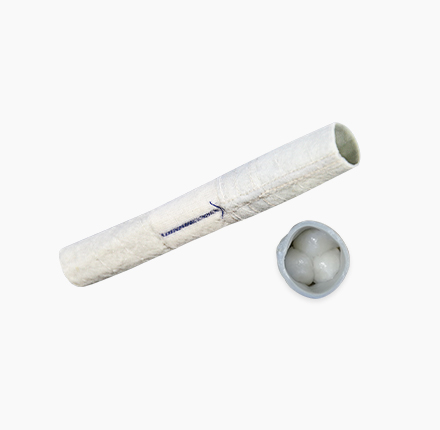Basic information
The pulmonary artery valved conduit is the first of its kind in the industry. It is used for the surgical reconstruction of the heart's pulmonary valve together with the main pulmonary artery. It has become the first artificial biological heart valve product dedicated to infants and young children. It is a "new animal-derived valved conduit" project of the National 12th Five-Year Science and Technology Support Plan. The major achievements of the project "Research and Development of Patch and Patch" (Project No.: 2014BAI11B03) were approved by the former State Food and Drug Administration for innovative medical devices. There is no similar product on the market in China so far.
The product is the first similar product approved for registration in China, filling a domestic gap.


Structure and composition
The product consists of proximal and distal conduits made from bovine jugular veins with native trileaflet valves. The proximal end pipe is derived from bovine jugular vein tissue, and the pipe from the upper edge of the valve to the distal end is made of bovine pericardial tissue. The outer surface of the pipe is covered with a polyester film material with a blue arrow mark on it. Biological tissues were treated with glutaraldehyde solutions of different concentrations. The inner diameter of each part of the pulmonary artery valved tube from the inflow end to the outflow end is the same. Sterilized by formaldehyde, refrigerated at 4-20°C, shelf life is three years.
Scope of application
It is used for implantation in congenital heart surgery, to reconstruct the right ventricular outflow tract or to replace a previously implanted artificial tube that has failed to treat various patients with right ventricular outflow tract malformations or lesions. mainly include:
-
Pulmonary artery stenosis or atresia;
-
Tetralogy of Fallot;
-
transposition of the great arteries;
-
Persistent truncus arteriosus;
-
Double exit from right ventricle;
-
Other types of patients who require reconstruction of the right ventricular outflow tract or pulmonary valve.


 Heart Valve repair and treatment
Heart Valve repair and treatment Congenital Heart Disease Treatment
Congenital Heart Disease Treatment

